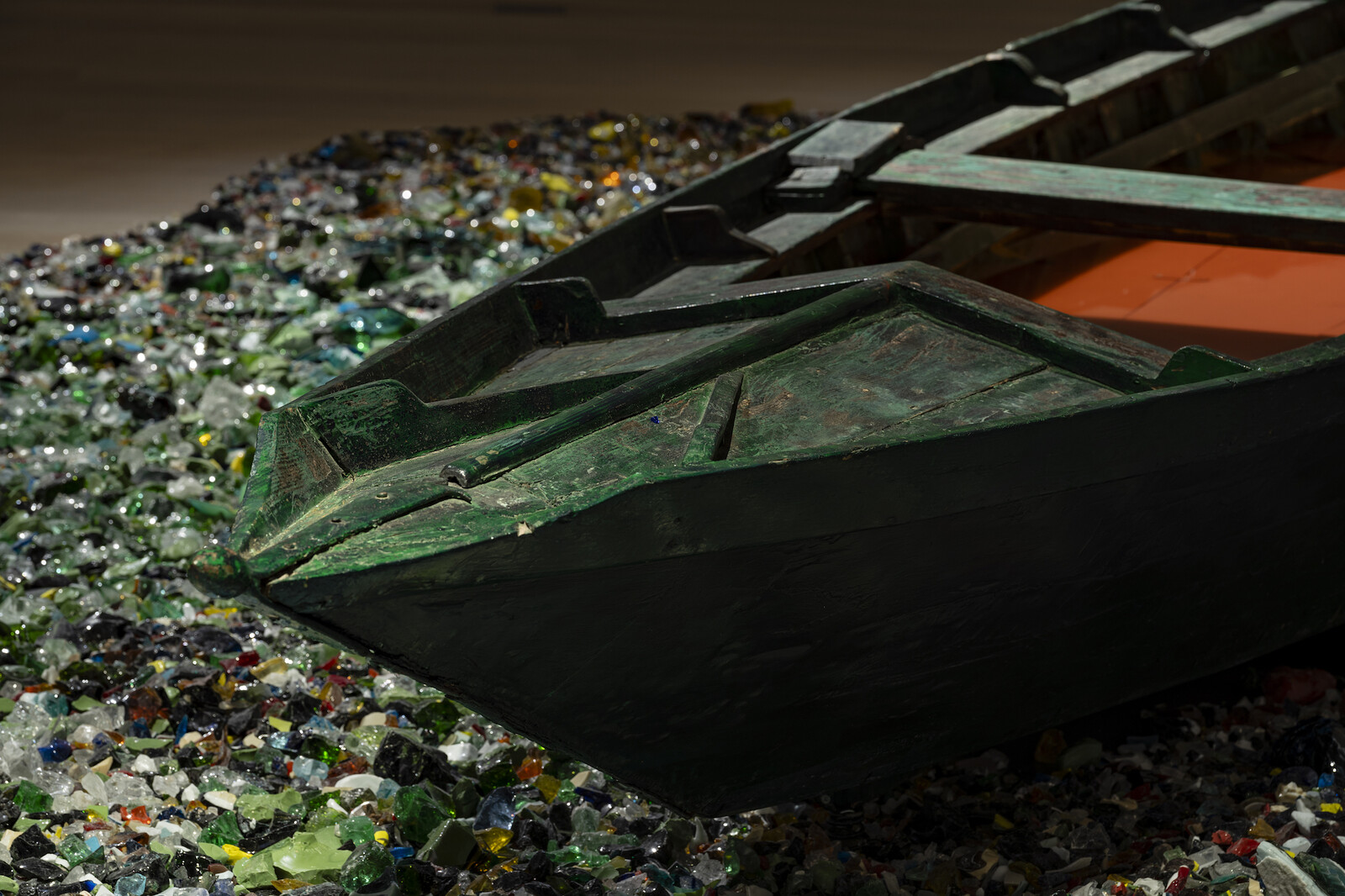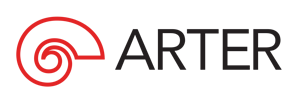Wet Floor
September 19, 2024–April 6, 2025
Landing Prohibited
September 19, 2024–February 23, 2025
Maaria Wirkkala: Landing Prohibited
September 19, 2024–February 23, 2025
Curator: Nilüfer Şaşmazer
Maaria Wirkkala’s Landing Prohibited, an installation which was displayed in the Finnish Pavilion at the 52nd Venice Biennale in 2007 and acquired the same year by the Arter Collection, will meet audiences in Istanbul for the first time on September 19, 2024.
The artist, who spent her childhood not only in her homeland Finland’s Helsinki in the south, and Lapland in the north, but also Venice in Italy, has positioned the ever-shifting elements of these geographies, such as water, air and light, at the centre of her practice since the 1980s. Her work Landing Prohibited consists of a ‘sea’ of broken glass, a traditional Venetian boat – sandolo – filled with water and gently rocking amidst this ‘sea’, a glass ladder suspended from the ceiling, and a solitary oar resting against a wall. The fragments of broken glass, used by the artist to create a rough, treacherous sea that makes it impossible to reach the shore, come from the Venini Glass Factory on the island of Murano in Venice, where her father Tapio Wirkkala worked as a glass designer starting in the mid-1960s.
Inspired by the “Landing prohibited” warning sign, frequently displayed along the canals of Venice, Maaria Wirkkala draws a parallel between this phrase and the anti-immigrant stance that prevails in many parts of the world, and references the perilous sea journeys undertaken by immigrants, which often end in tragedy. The installation, reinterpreted for the gallery space at Arter, interweaves the artist’s personal history and memories with enduring social and political issues.
Yasemin Özcan: Wet Floor
September 19, 2024–April 6, 2025
Curator: Eda Berkmen
Yasemin Özcan’s solo exhibition Wet Floor brings together a selection of the artist’s existing works with new pieces created especially for the gallery space at Arter. The exhibition explores the themes of intergenerational transmission, migration, and self-construction by delving into the complex relations between human beings and earth, language and remembrance, and autobiography and fiction.
Soil permeates the exhibition, serving both as a basic construction material, and a metaphor for cultural transmission. The works highlight the diverse ways clay is used and circulated, while drawing parallels between the transformation and movement of such materials, and the evolution of human constructs like language, identity, and relationships. Transforming everyday images and objects through subtle interventions, the artist draws upon the Alevi traditions passed down from her family to reveal different ways of experiencing gratitude, mourning loss, leaving a mark, and embracing nature’s cyclical processes.
The phrase “wet floor”, which serves as the title for both the exhibition and the newly created installation within it, is derived from an expression the artist frequently heard from real estate agents while searching for a new home. Typically used to describe “wet areas” which are in constant contact with water, such as kitchens and bathrooms, this expression also evokes precarious and insecure areas. Offering an introspective and humorous perspective on concepts such as lineage, transmission, memory, urbanisation and modernisation through fictional narratives, the exhibition Wet Floor explores the possibilities of accepting fragility and nurturing hope.
Visit here for Arter’s current and upcoming programme.
Press contact: Senem Çelikörslü, senemc [at] arter.org.tr.






